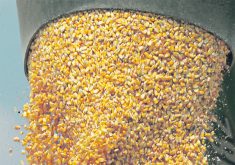An expected increase in wheat acres this year could be good news for other prairie grains and oilseeds.
The more acres that are devoted to wheat, the fewer will be planted in other crops.
And that, says market analyst Mike Jubinville of Pro Farmer Canada, could be an important first step toward reducing big price-depressing inventories of a number of crops.
“Wheat carries enough clout in terms of overall scale that any significant increase in wheat acres could reduce significantly the production potential of other commodities,” he said after speaking to the annual convention of the Western Canadian Wheat Growers Association.
Read Also

Chinese, Indian tariffs take toll on pea prices
The disruption of pea exports from Canada’s largest customers will likely result in slow pea exports for the remainder of the crop year.
Canada has sizable inventories in a variety of crops, from canola and barley to canaryseed and mustard. As long as those inventories remain, prices will continue to languish.
Prairie farmers are expected to increase wheat plantings by at least 10 to 15 percent from last year, or around 1.5 to two million acres.
If wheat prices remain relatively strong or increase, that could draw as much as another million acres away from other crops.
That wouldn’t necessarily produce a short-term spike in prices for those other commodities, but it would be an important development for the longer term.
“The big inventories from old crop are still there, that hasn’t changed and has to be drawn down,” he said.
“But when you go further down the road and harvest this crop, that means there’s just that little bit less to worry about when it comes to canola and barley and pulses.”
Jubinville made his comments last week, before rains fell across winter wheat growing areas in Texas, Oklahoma and Kansas, easing drought concerns and dropping wheat prices on U.S. markets.
In his remarks to the wheat growers meeting, Jubinville said the next few months will see a volatile weather market.
He told growers to look at forward pricing opportunities and suggested putting old-crop wheat into new-crop contracts or the 2006-07 pool account, and to think about managing the 2006 crop for yield rather than quality, given the possibility of narrower grade spreads if the crop is good quality.
If wheat futures remain strong, producers might want to lock in the futures and leave the basis open until harvest time.














